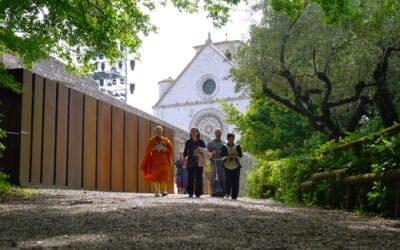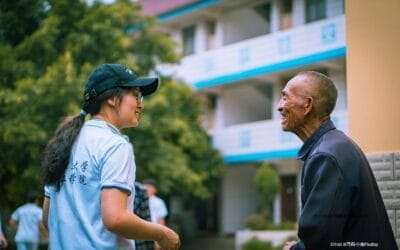On 20 June 2022 a conference was held in Rome on ‘The Identity of Movements and New Communities on the Synodal Path of the Church’ promoted by the Pontifical Lateran University and the Sophia University Institute. Increasing and deepening dialogue between hierarchical and charismatic gifts, between the institutional Church, Movements and New Communities. Cardinal Marc Ouellet’s wish is that these times, characterised by the synodal journey, may bring about a broader awareness of the charisms present in all the ecclesial communities. These words of the Prefect of the Congregation for Bishops and President of the Pontifical Commission for Latin America express the important stage in the conference “The Identity of Movements and New Communities on the Synodal Path of the Church” held yesterday at the Pontifical Lateran University and promoted jointly with the Sophia University Institute. At the centre of highly qualified speeches were the journey and open questions on these new expressions of the Spirit that require up-to-date answers which measure up to a continuously and rapidly changing world. Card. Kevin Farrell, Prefect of the Dicastery for the Laity, Family and Life, identified four areas of challenge that this journey presents today: dynamic fidelity to the charism, unity, synodality and missionary spirit: “The new perspectives that the Holy Spirit opens up before us always present themselves as challenges, something that does not leave us in peace because the Spirit is dynamism, it is creativity, it is life”.
How, then, is it possible to carry out an updating that has to be done in multiple environments: formation of members, evangelisation activities, activities to help and heal society’s deepest wounds? The variety and complementarity of responses and contributions offered by representatives of the Movements and New Communities provided a panorama on the current status of these ecclesial realities.
Margaret Karram, president of the Focolare Movement, stressed how “In these times when the whole Church is moving towards a synodal approach, we are called to take a step further: to walk together, united, not just within our own realities, but together with everyone”. It is only by networking, by being a gift for the Church and humanity that the Movements will also discover their own identity in a new way.
Mary Healy, professor of Sacred Scripture (Sacred Heart Major Seminary in Detroit, USA) highlighted formation, evangelisation and the primacy of the charismatic dimension as the three main fruits that Movements and New Communities have been bearing since the Second Vatican Council: gifts brought to the Church and humanity, founded on a personal and communitarian encounter with Christ. Speaking about “The Ecclesial Movements and New Communities in the current kairos of the synodal process”,
Mons. Piero Coda, theologian and Secretary General of the International Theological Commission and lecturer at Sophia University Institute, highlighted a challenge that is still open: the provisional nature of the configuration of these ecclesial realities with regard to their recognition in the canonical order. The care of the Church in this phase provides a foretaste, in the current dynamic ecclesiological context, to new and more mature arrangements’.
The session on “Foundation, Development and Incarnation of the Charism” was then entrusted with providing a representation of the Movements and New Communities.
Moysés Louro de Azevedo Filho, Founder and General Moderator of the Shalom Catholic Community, presented the spirit and aims of this ecclesial expression that is “the bearer of a charism summed up in the word spoken by Jesus when he met the disciples in the Upper Room: “Shalom”, towards communitarian holiness”.
Daniela Martucci, vice-president of the Comunità Nuovi Orizzonti highlighted the heart of its charism: listening to the cry of Jesus Crucified and forsaken in the poor, the least and the discarded as well as the cry of love of the God-Man who continues to repeat: “love one another as I have loved you”.
Iraci Silva Leite emphasised the centrality of the Word of God that guides the experience of the “Fazenda da Esperança”, a Word that “unites us, particularly in our efforts to live love among ourselves and to give those who suffer the presence of Jesus”.
Michel-Bernard De Vregille of the Emmanuel Community touched on the theme of crises that ecclesial realities have encountered and continue to encounter: “There is often the risk of wanting to set charism and institution against each other,” he said. “However, the torch of the hierarchical and institutional Church and the torch of the charism are made to meet together and become a bright and beautiful flame illuminating the world with the presence of the Risen Lord”. For the aspect of incarnation,
Prof. Luigino Bruni,
an economist, focused on the ‘narrative’ challenge of charisms born in a historical period often recounted in ways that are typical of the founding period. “Updating is needed together with the charism,” he said, “without losing touch with the charism’s fundamental core. A new narrative potential will come from the pluralism of languages, from various experiences, from the dialogue between people with different sensitivities: young people and adults, academics and ordinary people, Church and movements, etc.”
In the afternoon, work focused on how charisms can and should develop all aspects of the life of members and communities, from the spiritual to the organisational, by including members of different vocations, to formation, to the administration of assets and all forms of responsibility and governance.
Prof. Elena Di Bernardo, Professor of Canon Law (Institutum Utriusque luris, Pontifical Lateran University) offered a highly qualified excursus on the relations between theology and canon law, as they have been realised and evolved over time. ‘It must be assumed that the identity in itself of a Movement or ecclesial reality,’ she observed, ‘is fully acquired when all the charismatic aspects constituting it have received adequate juridical configuration’. At the close of the proceedings, the report by
Dr Linda Ghisoni, Undersecretary of the Dicastery for the Laity, Family and Life, entitled “Laity today in the ecclesiology of communion”, highlighted two polarities to which attention must be given: person-institution and praxis-statutes. With regard to the former, she observed that ‘the institution, Movement or new community, will be preserved if its original charism, its proper purposes in which prayer and apostolate are combined, and, above all, will be preserved if the good of the persons who make it up is safeguarded. The latter can never be an alternative to the good of the institution!” Stressing how experience painfully teaches us that whenever the ‘good name’ of the community has been preserved by sacrificing individual persons and their rights, aberrations have been committed that are detrimental to the institution as a whole. He concluded: ‘The person at the centre, always, constitutes an investment in the community or movement. The other polarity instead concerns practice and statutes: if it is true that ‘life undoubtedly anticipates every normative definition’, it is also true that any legalism or demonisation of law must be avoided, which ‘far from being a necessary evil to be endured by drawing up a list of articles, constitutes a path of freedom for all: for all members and for those who are personally called upon to be its guarantors, particularly for those who hold positions of government, at all levels’.
Stefania Tanesini




0 Comments